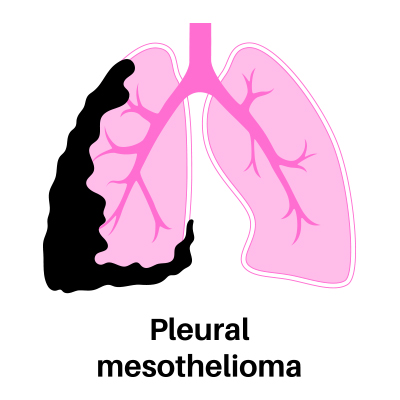
Pleural Mesothelioma, representing approximately 80% of all mesothelioma cases, is a serious asbestos-related malignancy. This comprehensive guide delves into the multifaceted nature of this aggressive cancer, from its origins and symptoms to diagnostic procedures, treatment options, and prognosis.
Overview of Pleural Mesothelioma
Pleural Mesothelioma is a rare but aggressive cancer that develops in the lining of the lungs, known as the pleura. It is the most common form of mesothelioma, significantly overshadowing other variants such as peritoneal mesothelioma.
– It constitutes about 80% of all diagnosed mesothelioma cases.
– Roughly 2,400 out of the 3,000 U.S. diagnosed cases per year are pleural.
– The male to female incidence ratio is approximately 4:1, reflecting historical occupational asbestos exposure trends.
– Avoidance of asbestos exposure is the only proven preventive measure for pleural mesothelioma.
– The primary cause is universally recognized as exposure to asbestos.
Understanding the Causes of Pleural Mesothelioma
Pleural Mesothelioma develops over an extended period, typically 20-50 years post initial asbestos exposure. Asbestos exposure can occur in various ways, including occupational, environmental, or secondary exposure. Veterans, particularly those who served in the U.S. Navy, are significantly at risk.
Inhaled asbestos fibers can become lodged in the pleura, causing inflammation and scarring. Over time, this can lead to DNA damage and abnormal cell growth, ultimately resulting in tumor formation. These fibers are notoriously difficult for the body to expel, contributing to the long latency period of the disease.
Symptomatic Overview of Pleural Mesothelioma
The symptoms of pleural mesothelioma often mimic those of other respiratory conditions, making early diagnosis challenging. Symptoms generally appear when the disease has reached an advanced stage.
Common Indicators of Pleural Mesothelioma
– Persistent cough
– Chest pain
– Shortness of breath
– Pleural effusion (fluid buildup around the lungs)
– Fatigue
– Weight loss
– Fever
– Night sweats
As the disease progresses, symptoms may become more severe and include difficulty swallowing, coughing up blood, and severe chest pain. Diagnosis often involves imaging tests and biopsies performed by mesothelioma specialists.
Uncommon Signs and Symptoms of Pleural Mesothelioma
Some less common symptoms may be mistaken for other conditions due to their rarity and nonspecific nature.
– Hoarseness
– Swelling of the face and arms
– Muscle weakness
– Horner’s syndrome (a neurological condition affecting the eye and facial muscles)
Staging and Prognosis of Pleural Mesothelioma
Pleural mesothelioma is staged using the Tumor Node Metastasis (TNM) system, which helps to determine the extent of the disease and guide treatment options.
Stage 1: Cancer is localized to the pleura and has not spread to lymph nodes or other organs.
Stage 2: Cancer has spread to nearby lymph nodes and possibly the diaphragm or lung.
Stage 3: Cancer has spread to the chest wall, pericardium, or other nearby tissues.
Stage 4: Cancer has metastasized to distant organs or tissues, such as the brain, liver, or bones.
The prognosis for pleural mesothelioma patients varies widely based on the stage at diagnosis and the patient’s overall health. The average survival time ranges from 12 to 21 months, with earlier-stage diagnoses generally having better outcomes.
Treatment Options for Pleural Mesothelioma
Treatment for pleural mesothelioma often involves a multimodal approach, combining surgery, chemotherapy, and radiation therapy to maximize effectiveness.
Surgery
Surgical options aim to remove as much of the tumor as possible and may include procedures such as pleurectomy/decortication (P/D) or extrapleural pneumonectomy (EPP).
– Pleurectomy/Decortication (P/D): This procedure involves removing the pleura lining and any visible tumors, sparing the lung.
– Extrapleural Pneumonectomy (EPP): A more radical surgery that removes the affected lung, part of the diaphragm, and other surrounding tissues.
Chemotherapy
Chemotherapy is often used to kill remaining cancer cells after surgery or as a primary treatment when surgery is not an option. The most common chemotherapy regimen for pleural mesothelioma includes a combination of pemetrexed and cisplatin.
Radiation Therapy
Radiation therapy can be used to shrink tumors and alleviate symptoms. It is often combined with surgery and chemotherapy for a comprehensive treatment approach.
Emerging Treatments and Clinical Trials
Innovative treatments such as immunotherapy and targeted therapy are being explored in clinical trials, offering hope for improved outcomes. Immunotherapy drugs like pembrolizumab have shown promise in extending survival for some patients.
The battle against Pleural Mesothelioma requires a multifaceted approach involving early detection, a comprehensive treatment plan, and ongoing research into emerging therapies. With continued advancements in medical science and treatment options, there is hope for improving the prognosis and quality of life for those affected by this challenging condition.
